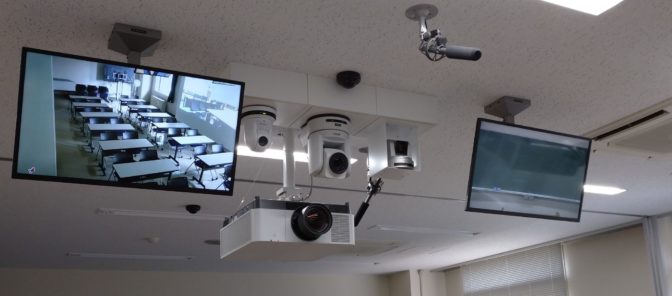
Uber has won its battle to operate in London, one of its biggest markets, after a judge found that the company had addressed safety concerns. Read More
from VentureBeat https://ift.tt/30bXEnO
via A.I .Kung Fu



Ryan Browne / CNBC:
Uber wins legal fight to regain London license as a judge overturned a ban by the city's transport regulator TfL — (Photo by Olly Curtis/Future via Getty Images) — Uber won its legal fight to continue operating in London on Monday, as a judge overturned a ban on the ride-hailing app by the city's transport regulator.
SpaceX has already launched more than 700 Starlink satellites, with thousands more due to come online in the years ahead. Their prime mission is to provide high-speed internet virtually worldwide, including to many remote locations that have lacked reliable service to date.
Now, research funded by the US Army has concluded that the growing mega-constellation could have a secondary purpose: by doubling as a low-cost, highly accurate and almost unjammable alternative to GPS. The new method would use existing Starlink satellites in Low Earth Orbit (LEO) to provide near-global navigation services.
In a non-peer reviewed paper, Todd Humphreys and Peter Iannucci at the Radionavigation Laboratory at The University of Texas at Austin claim to have devised a system that uses the same satellites, piggybacking on traditional GPS signals, to deliver location precision up to ten times as good as GPS, and much less prone to interference.
The Global Positioning System consists of a constellation of around 30 satellites orbiting 20,000 kilometers above the Earth. Each satellite continually broadcasts a radio signal containing its position and the exact time from a very precise atomic clock on board. Receivers on the ground can then compare how long signals from multiple satellites take to arrive and calculate their position, typically to within a few meters.
The problem with GPS is that those signals are extremely weak by the time they reach the Earth, and are easily overwhelmed by either accidental interference or electronic warfare. In China, mysterious GPS attacks have successfully “spoofed” ships into fake locations, while GPS signals are regularly jammed in the eastern Mediterranean.
The US military relies heavily on GPS. Last year, the US Army Futures Command, a new unit dedicated to modernizing its forces, visited Humphreys’ lab to talk about a start-up called Coherent Navigation he had co-founded in 2008. Coherent aimed to use signals from Iridium satellites as a rough alternative to GPS, and was acquired by Apple in 2015.
“They told me the Army has a relationship with SpaceX [it signed an agreement to test Starlink to move data across military networks in May] and would I be interested in talking to SpaceX about using their Starlink satellites the same way that I used these old Iridium satellites?” Humphreys says. “That got us an audience with people at SpaceX, who liked it, and the Army gave us a year to look into the problem.” Futures Command also provided several million dollars in funding.
The concept of using a LEO constellation, such as Starlink’s satellites at 550 kilometers, for navigation isn’t new. In fact, some of the first US spacecraft launched in the 1960s were Transit satellites orbiting at 1100 kilometers, providing location information for Navy ships and submarines. The advantage of a LEO constellation is that the signals can be a thousand times stronger than GPS. The disadvantage is that each satellite can serve only a small area beneath it, so that reliable global coverage requires hundreds or even thousands of satellites.
Building a whole new network of LEO satellites with ultra-accurate clocks would be an expensive undertaking. Bay Area start-up Xona Space Systems plans to do just that, aiming to launch a constellation of at least 300 “Pulsar” satellites over the next six years.
Instead, Humphreys and Iannucci’s idea is to use a simple software upgrade to modify Starlink’s satellites to use their communications abilities and existing GPS signals to provide position and navigation services .
They claim their new system can even, counterintuitively, deliver better accuracy for most users than the GPS technology it relies upon. That is because the GPS receiver on each Starlink satellite can use cutting-edge algorithms that are rarely found in consumer products, to pinpoint its location within just a few centimeters. These technologies exploit physical properties of the GPS radio signal, and its encoding, to improve the accuracy of location calculations. Essentially, the Starlink satellites can do the heavy computational lifting for their users below.
The Starlink satellites are also essentially internet routers in space, capable of achieving 100 megabits per second. GPS satellites, on the other hand, communicate at fewer than 100 bits per second
“There are so few bits per second available for GPS transmissions that they can’t afford to include fresh, highly accurate data about where the satellites actually are,” says Iannucci. “If you have a million times more opportunity to send information down from your satellite, the data can be much closer to the truth.”
The new system, which Humphreys calls fused LEO navigation, will use instant orbit and clock calculations to locate users to within 70 centimeters, he estimates. Most GPS systems in smartphones, watches and cars, for comparison, are only accurate to a few meters.
But the key advantage for the Pentagon is that fused LEO navigation should be significantly more difficult to jam or spoof. Not only are its signals much stronger at ground level, the antennas for its microwave frequencies are about ten times more directional than GPS antennas. That means it should be easier to pick up the true satellite signals, rather than those from a jammer. “At least, that’s the hope,” says Humphreys.
According to Humphreys and Iannucci’s calculations, their fused LEO navigation system could provide continuous navigation service to 99.8 percent of the world’s population, using less than 1 percent of Starlink’s downlink capacity and less than 0.5 percent of its energy capacity.
“I do think this could lead to a more robust and accurate solution than GPS alone,” says Todd Walters, from Stanford University’s GPS Lab, who was not involved with the research. “And if you don’t have to modify Starlink’s satellites, it certainly is a fast, simple way to go.”
Nor is the navigation technology limited to just SpaceX’s satellites. The bankrupt OneWeb constellation that the UK government is purchasing could also serve as a home-grown navigation system, says Iannucci, “although Starlink is in pole position right now.”
Fused LEO navigation does have its drawbacks, however. The initial Starlink mega-constellation is not expected to operate above 60 degrees latitude, meaning that residents of Helsinki might miss out on its benefits, as would soldiers in any future disputed Arctic or Antarctic regions.
To use the system on the ground would also mean relying upon SpaceX’s own Starlink antenna—described by Musk as looking like a UFO on a stick and likely having a significant price tag—rather than cheap GPS chips that can fit into smartphones and watches. Any future fused LEO navigation service would also, unlike GPS, come with a significant price-tag attached, not least because SpaceX needs to start seeing a return on its huge investment in Starlink. For these reasons, not everyone thinks it’s the way forward.
“We looked at this approach a long time ago and neither the commercial nor the technical capabilities really made sense, which is why we’re working on an independent constellation,” says Xona CEO Brian Manning.
Neither the US Army Futures Command nor SpaceX responded to requests for comment, but the UT researchers are hoping that Elon Musk will see the value of the new technology. “There’s a potential here to really change navigation worldwide,” says Iannucci.
Ingrid Lunden / TechCrunch:
LinkedIn rolls out its own version of Stories and adds Zoom, BlueJeans, and Teams video integrations as part of wider redesign — With the employment market remaining sluggish as the world continues to struggle with COVID-19, a company that has built its popular businesses largely around recruitment …
Back to school was destined to look different this year.
With the world adapting to COVID-19, safety measures are preventing a return to in-person teaching in many places. Also, students learning through conventional video conferencing systems often feel the content is difficult to read, or teachers block the words written on presentation boards.
Faced with these challenges, educators at Prefectural University of Hiroshima in Japan envisioned a high-quality remote learning system with additional features not possible with traditional video conferencing.
They chose a distance-learning solution from Sony that links lecturers and students across their three campuses. It uses AI to make it easy for presenters anywhere to engage their audiences and impart information using captivating video. Thanks to these innovations, lecturers at Prefectural University can now teach students simultaneously on three campuses linked by a secure virtual private network.

At the heart of Prefectural’s distance learning system is Sony’s REA-C1000 Edge Analytics Appliance, which was developed using the NVIDIA Jetson Edge AI platform. The appliance lets teachers and speakers quickly create dynamic video presentations without using expensive video production gear or learning sophisticated software applications.
Sony’s exclusive AI algorithms run inside the appliance. These deep learning models employ techniques such as automatic tracking, zooming and cropping to allow non-specialists to produce engaging, professional-quality video in real time.
Users simply connect the Edge Analytics Appliance to a camera that can pan, tilt and zoom; a PC; and a display or recording device. In Prefectural’s case, multiple cameras capture what a lecturer writes on the board, questions and contributions from students, and up to full HD images depending on the size of the lecture hall.
Managing all of this technology is made simple for the lecturers. A touchscreen panel facilitates intuitive operation of the system without the need for complex adjustment of camera settings.
One of the landmark applications in the Edge Analytics Appliance is handwriting extraction, which lets students experience lectures more fully, rather than having to jot down notes.
The application uses a camera to record text and figures as an instructor writes them by hand on a whiteboard or blackboard, and then immediately draws them as if they are floating in front of the instructor.
Students viewing the lecture live from a remote location or from a recording afterward can see and recognize the text and diagrams, even if the original handwriting is unclear or hidden by the instructor’s body. The combined processing power of the compact, energy-efficient Jetson TX2 and Sony’s moving/unmoving object detection technology makes the transformation from the board to the screen seamless.
Handwriting extraction is also customizable: the transparency of the floating text and figures can be adjusted, so that characters that are faint or hard to read can be highlighted in color, making them more legible — and even more so than the original content written on the board.

Another innovative application is Chroma key-less CG overlay, using state-of-the-art algorithms from Sony, like moving-object detection, to produce class content without the need for large-scale video editing equipment.

Like a personal greenscreen for presenters, the application seamlessly places the speaker in front of any animations, diagrams or graphs being presented.
Previously, moving-object detection algorithms required for this kind of compositing could only be run on professional workstations. With Jetson TX2, Sony was able to include this powerful deep learning-based feature within the compact, simple design of the Edge Analytics Appliance.
Numerous additional algorithms within the appliance include those for color-pattern matching, shape recognition, pose recognition and more. These enable features such as:

With the high-performance Jetson platform, the Edge Analytics Appliance can easily handle a wide range of applications like these. The result is like a virtual camera operator that allows people to create engaging, professional-looking video presentations without the expertise or expense previously required to do so.
Officials at Prefectural University of Hiroshima say the new distance learning initiative has already led to greater student and teacher satisfaction with remote learning. Linking the university’s three campuses through the system is also fostering a sense of unity among the campuses.
“We chose Sony’s Edge Analytics Appliance for our new distance learning design because it helps us realize a realistic and comfortable learning environment for students by clearly showing the contents on the board and encouraging discussion. It was also appealing as a cost-effective solution as teachers can simply operate without additional staff,” said Kyousou Kurisu, director of public university corporation, Prefectural University of Hiroshima.
Sony plans to continually update applications available on the Edge Analytics Appliance. So, like any student, the system will only get better over time.
The post AI in Schools: Sony Reimagines Remote Learning with Artificial Intelligence appeared first on The Official NVIDIA Blog.
Annie Palmer / CNBC:
Amazon says its Prime Day annual sale will take place on October 13 and 14 after the original summer date was delayed by the coronavirus pandemic — - Amazon Prime Day will take place on Oct. 13 and 14 this year, the company announced Monday. — The company postponed its biggest shopping …
Eudora Wang / DealStreetAsia:
Fiture, a Chinese startup that offers smart home fitness equipment, raises $65M Series A led by Tencent — FITURE, a Chinese startup that offers smart home fitness equipment, has secured $65 million in a Series A round of financing led by Tencent with participation from its angel round investor Sequoia Capital China.
New York Times:
Federal judge grants a preliminary injunction against a Trump administration order that would have banned TikTok from US app stores — The government said a ban would address its national security concerns. But lawyers for its owner said a ban would be “no different from the government locking the doors to a public forum.”